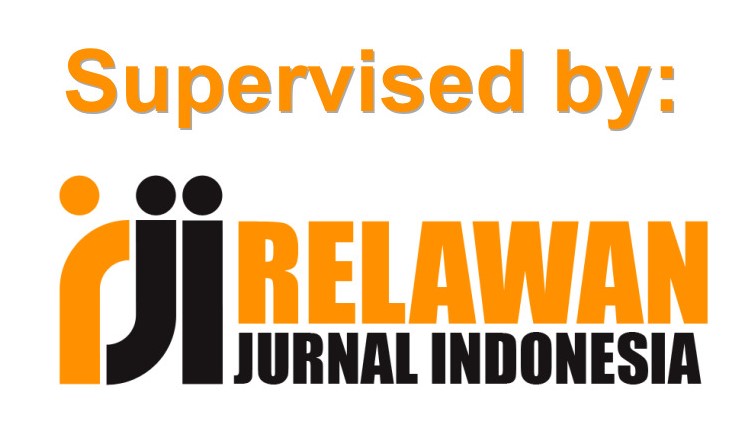Musical Phenomenon in the Traditional Art of Alee Tunjang in Aceh
DOI:
https://doi.org/10.24114/grenek.v12i2.49597Keywords:
Analysis, Musical Phenomenon, Alee Tunjang.Abstract
Alee Tunjang is an art form originating from North Aceh Regency that consists of melodic and rhythmic music elements. The form of this art instrument is in the form of vocals that chant verses, and mortar beaten by alu/alee in the form of percussion rhythms with six sound colors. These two types of musical instruments form a distinctive musical fabric in the presentation of the performance, where melodic and rhythmic instruments are played not only as the main melody and melodic musical accompaniment, but the two elements become inseparable, as evidenced by the musical fills of Alee Tunjang that alternate and complement each other. The purpose of this research is to analyze the musical phenomena found in the art of Alee Tunjang. The method in this research uses a qualitative approach, with data collection techniques: literature review, observation, interview, and documentation. Alee Tunjang's music is divided into three sections, namely: Saleum, Kisah, and Lani, which consists of one vocal player and five lesung players, each with a constant rhythm and repetition. The tempo and rhythm are similar in all parts of the Alee Tunjang song/chapter. The difference in rhythm and cadence is found in the lesung 4th instrument which plays the tung sound color by playing a pattern on a different weak beat in each part of the song/chapter of Alee Tunjang.References
Aganovic, Izet., dkk. (2016). Teknik Permainan Alat Musik Tiup Tradisional Aceh Seurune Kalee Pada Tarian Piasan Raya di Sanggar Seurayeng Nanggroe Bireuen. Jurnal Ilmiah Mahasiswa Prodi Sendratasik, USK. 1(4): 261-268. https://jim.usk.ac.id/sendratasik/article/view/5347
Aryesha, V., Fajri, N. (2021). Alee Tunjang: Fungsi dan Persepsi masyarakat Desa Prie Kecamatan Tanah Pasir Kabupaten Aceh Utara. Jurnal Genta Mulia. 12(2). 294-306. DOI: https://doi.org/10.61290/gm.v12i2.389
Darsono, Ali. (2016). Deskripsi Talempong pacik Lagu 32 di Sanggar Seni badano di Pekanbaru Provinsi Riau. Jurnal KOBA. 3(1). https://journal.uir.ac.id/index.php/koba/article/view/1340
Karina, A.E., dkk. (2022). Transkripsi Musikal Pertunjukan Rapai Pasee di Aceh Utara. Grenek: Jurnal Seni Musik. 11(1). 38-45. DOI: https://doi.org/10.24114/grenek.v11i1.34695
Nettl, B. (2012). Teori dan Metode dalam Etnomusikologi. Jayapura: Jayapura Center Of Music.
Pratama, H.N., Rozak, A. (2021). Karakteristik Musikal Pada Film Tenggelamnya Kapal Van Der Wijck. Gorga: Jurnal Seni Rupa. 10(2): 551-558. DOI: https://doi.org/10.24114/gr.v10i2.29202
Purnomo, T.W., Aulia, S.M. (2021). Analisis Lagu Mudiak Arau dalam Pertunjukan Talempong Pacik Ikua Parik Kanagarian Limbanang. Grenek: Jurnal Seni Musik. 10(1). 46-59. DOI: https://doi.org/10.24114/grenek.v10i1.24891
Rozak, A., Pratama, H.N. (2021). Fungsi Musik pada Film Tenggelamnya Kapal Van Der Wijck. Musica: Journal of Music. 1(2): 140-147. DOI: http://dx.doi.org/10.26887/musica.v1i2.2101
Rusady, Winda Ade. (2019). Studi Deskriptif Posisi Memainkan Alee Tunjang di Desa Prie Kecamatan Tanah Pasir Kabupaten Aceh Utara. Skripsi. Jurusan Seni Pertunjukan ISBI Aceh. DOI: https://doi.org/10.61290/gm.v12i2.389
Sandika, D., dkk. (2022). Bentuk dan Struktur Musik Rodat di Kabupaten Empat Lawang. Grenek: Jurnal Seni Musik. 11(1). 27-37. DOI: https://doi.org/10.24114/grenek.v11i1.33577
Wahyono, A.A., Ghozali Imam, Silaban S.Y. (2019). Struktur Musik Nyantuk Durian Masyarakat Desa Medan Jaya, Simpang Hilir Kabupaten Kayong Utara. Jurnal Pendidikan dan Pembelajaran: Khatulistiwa. 8(9): 1-10 DOI: http://dx.doi.org/10.26418/jppk.v8i9.35919
Downloads
Published
Issue
Section
License
Copyright (c) 2023 Surya Rahman, Berlian Denada, Abdul Rozak

This work is licensed under a Creative Commons Attribution-ShareAlike 4.0 International License.
Authors published with the Grenek: Jurnal Seni Musik agree to the following terms:
- Authors retain copyright and grant the journal the right of first publication with the work simultaneously licensed under a Creative Commons Attribution License (CC BY-SA 4.0) that allows others to share the work with an acknowledgment of the work's authorship and initial publication in this journal.
- Authors are able to enter into separate, additional contractual arrangements for the non-exclusive distribution of the journal's published version of the work (e.g., post it to an institutional repository or publish it in a book), with an acknowledgment of its initial publication in this journal.
- Authors are permitted and encouraged to post their work online (e.g., in institutional repositories or on their website) prior to and during the submission process, as it can lead to productive exchanges, as well as earlier and greater citation of published work. (See The Effect of Open Access)








